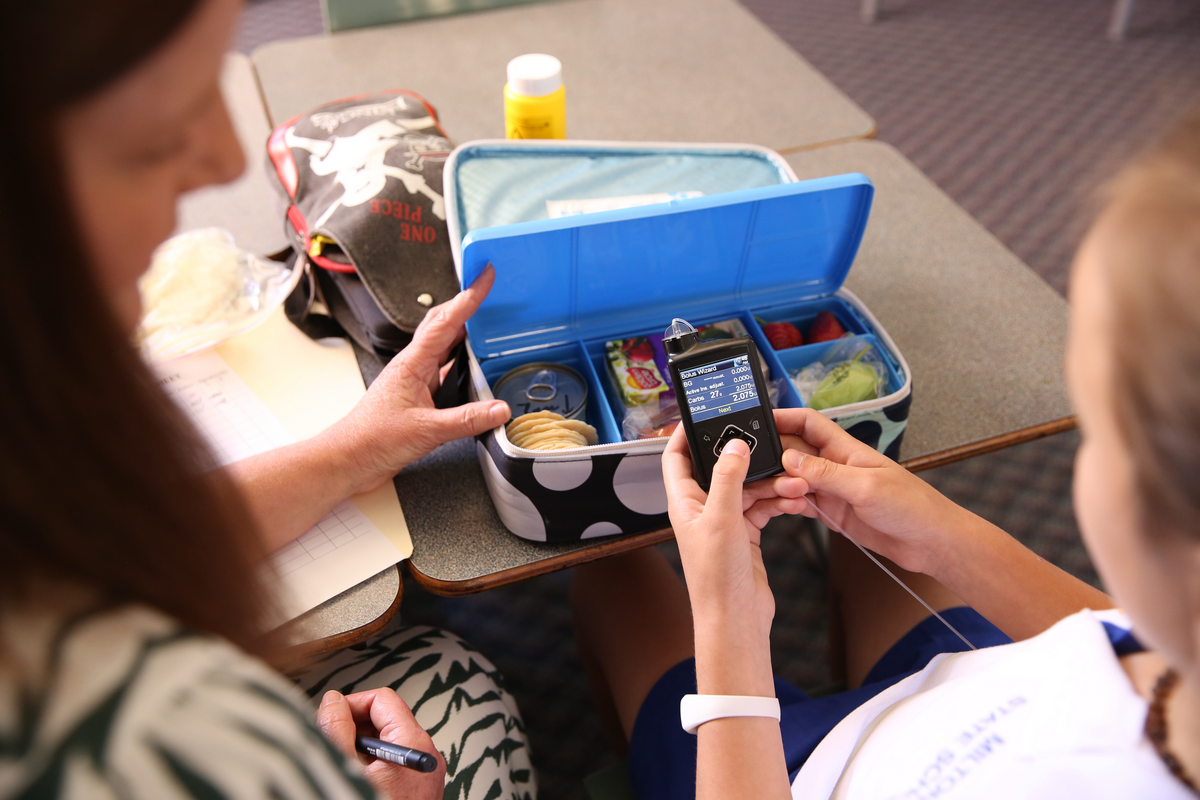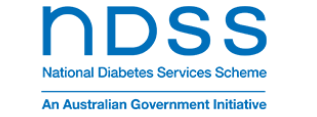
Most students living with type 1 diabetes now use technology to manage their diabetes at school. Learn more about the different types of technology available, how they work and what they are used for.
What’s on this page |
Continuous glucose monitoring (CGM)
Many students with type 1 diabetes use a continuous glucose monitoring (CGM) system to track their glucose levels.
CGM systems have a small, wearable sensor that measures glucose levels in the body continuously. Every few minutes the glucose level is sent via Bluetooth to a mobile phone or other display device (e.g. an insulin pump or CGM receiver). This allows the student to easily check what their glucose level is at any time just by looking at the device.
CGM systems can have alarms set to alert the student, parents/carers, or school staff when glucose levels are out of range. The student’s diabetes management plan will outline how school staff should respond to CGM alarms.
Students using CGM must always be able to access their display device, including during tests or exams. The device must be within 4–6 metres of the student.

Insulin pumps
Some students may use an insulin pump to give insulin. Insulin pumps are small devices that are worn constantly and are programmed to deliver precise amounts of insulin under the skin during the day and night.
School staff are not responsible for adjusting, programming, or maintaining the pump. The diabetes management plan will outline the insulin pump support required from designated staff.
Learn more about how an insulin pump works in this short animation.
Extra insulin for carbohydrates or a high glucose level is given using a linked device such as a mobile phone or smartwatch, or by using the pump’s buttons.
Insulin pumps can usually be disconnected for short periods (no more than 90 minutes), for example when swimming or during contact sports.
Most newer insulin pumps can be linked to the student’s CGM. This means the insulin pump can automatically adjust the amount of insulin given based on the student’s glucose levels, to help keep their glucose levels in range.
Apps
Many people with type 1 diabetes use apps to help them with tracking their glucose levels, counting carbohydrates in their food, or calculating insulin doses.
More information
More information and device manuals can be found on the manufacturers’ websites below.
CGMs
FreeStyle Libre 2 and FreeStyle Libre 2 plus
Insulin pumps
Disclaimer
Third party information and links on this website are provided to support the care of students living with diabetes at school, including devices and technologies often used in the management of diabetes. Please note resources and information are not intended to be used as a substitute to clinical or medical advice and are intended to be used as a support resource in combination with the advice of the student’s clinical or medical treating team (e.g. health professional), and the parents, family and/or carers of that student. The student’s clinical or medical treating team, parents, family and carers can help you navigate to the information which is appropriate and applicable to assist with the provision of care and support for each individual student.
The third party provider holds the copyright of the materials presented on this website and will have terms of use in relation to their information available on the applicable resources or websites.
If there are concerns about any of the above links, please contact us and a review will be conducted as appropriate. While the Diabetes in Schools team reviews and updates the third party information on this page (and adds or removes links to third party websites from time to time), Diabetes Australia has no control over third party websites, materials contained in them or the services made available through them. To the maximum extent permitted by law, Diabetes Australia excludes all liability for any third party material contained in or linked to this website including for any loss or damage that may arise from your use of such material.
Last updated: September 2025


